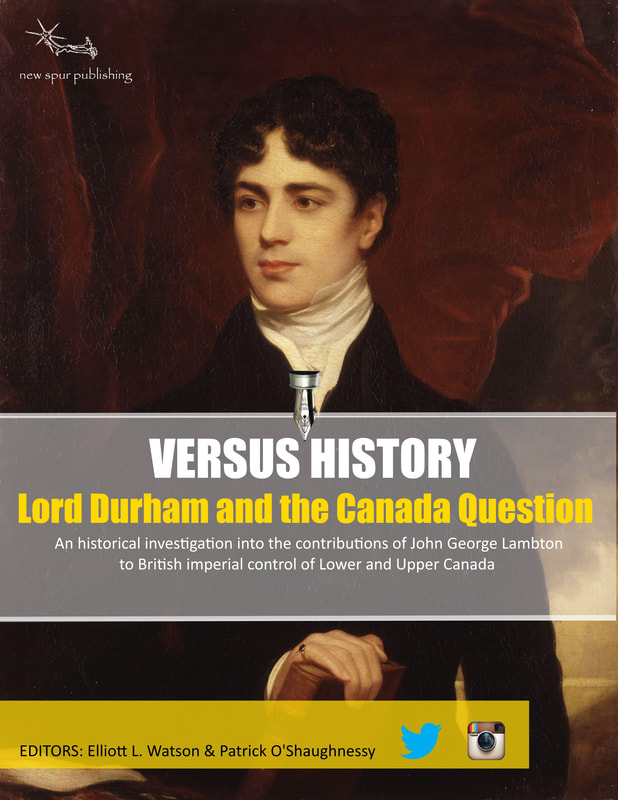|
Today marks the arrival of our second Versus History publication: Lord Durham and the Canada Question. Our previous publication, 33 Easy Ways to Improve Your History Essays, was written to help students navigate the difficult waters of historical writing; this time we have written an academic investigation into an integral part of British Imperial history. The rationale for writing about Lord Durham - often known as ‘Radical Jack’ - was simple: we found that Lord Durham’s contribution to British Imperial policy, particularly as it related to the Canadas, was woefully under served in the textbooks and presented a truly difficult challenge to students seeking to source readily available academic literature on the topic. Thus it was that we set our energies to uncovering the role of the enigmatic Lord Durham in the ‘Canada Question’.
Great Britain’s influence in North America was reduced in humiliating fashion by the American Revolutionary War (1775-83); the loss of the thirteen American colonies was a disaster for King George III and the metropole. However, British influence - though radically diminished - still remained in North America, albeit in a much diluted form and a more northerly location. Its reconstituted North American territory still contained New France - a product of the British victory in the Seven Years War over France and Spain. Among other territories, New France contained Lower and Upper Canada. When, in 1837, the British-controlled territories of Lower and Upper Canada erupted in open rebellion against the metropole, it seemed to some at the time that Great Britain was to suffer an unconscionable second colonial humiliation in the space of just over half a century. Although there is debate about just how serious these twin rebellions were to London’s dominion over the Canadas and, indeed, to the wider British Empire. Equally, the comparisons drawn between the revolution south of the border and those of Lower and Upper Canada, have proved uncertain. What is certain, however, is that Lord Durham was thrust into the centre of this ‘Canadian problem’. John George Lambton, Earl of Durham and Whig boulevardier, was cajoled by British Prime Minister, Viscount Melbourne, and even the young Queen Victoria, to take on the roles of Governor-General and High Commissioner of British North America. In this role, he was tasked with determining the causes of the twin Canadian rebellions and, crucially, proffer solutions. These solutions needed to achieve twin outcomes, both with high degrees of subtlety: placate Canadian dissatisfactions; maintain British rule. The central discussions rest here: what, if anything, did Lord Durham achieve in his brief time as the Governor-General/High Commissioner of British North America? Canada did not follow the revolutionary lead of its geographical cousin to the south and, in fact, became the very model of responsible government within the British empire. In time, Australia, New Zealand and South Africa would adopt similar models of government. However, just to what degree Lord Durham deserves credit for these developments, is where we must begin our investigations. In true Versus History style, Elliott will be asserting the contributions of Lord Durham were crucial to the settling of the ‘Canadian issue’, while Patrick will be challenging this argument with his own: that Durham’s involvement was minimal at best, and the ‘issue’ was a mere ‘trifle’ in the overall concerns of the British Empire. Pre-order the ebook format now, or download it from Amazon on the 17th, which is free for the first five days of publication, and discover - either as a student or a teacher - the contributions of the enigmatic Lord Durham to the ‘Canada Question’. Elliott L. Watson & Patrick O’Shaughnessy Co Editors and Authors of Versus History
0 Comments
Leave a Reply. |
Categories
All
Archives
April 2024
|

 RSS Feed
RSS Feed